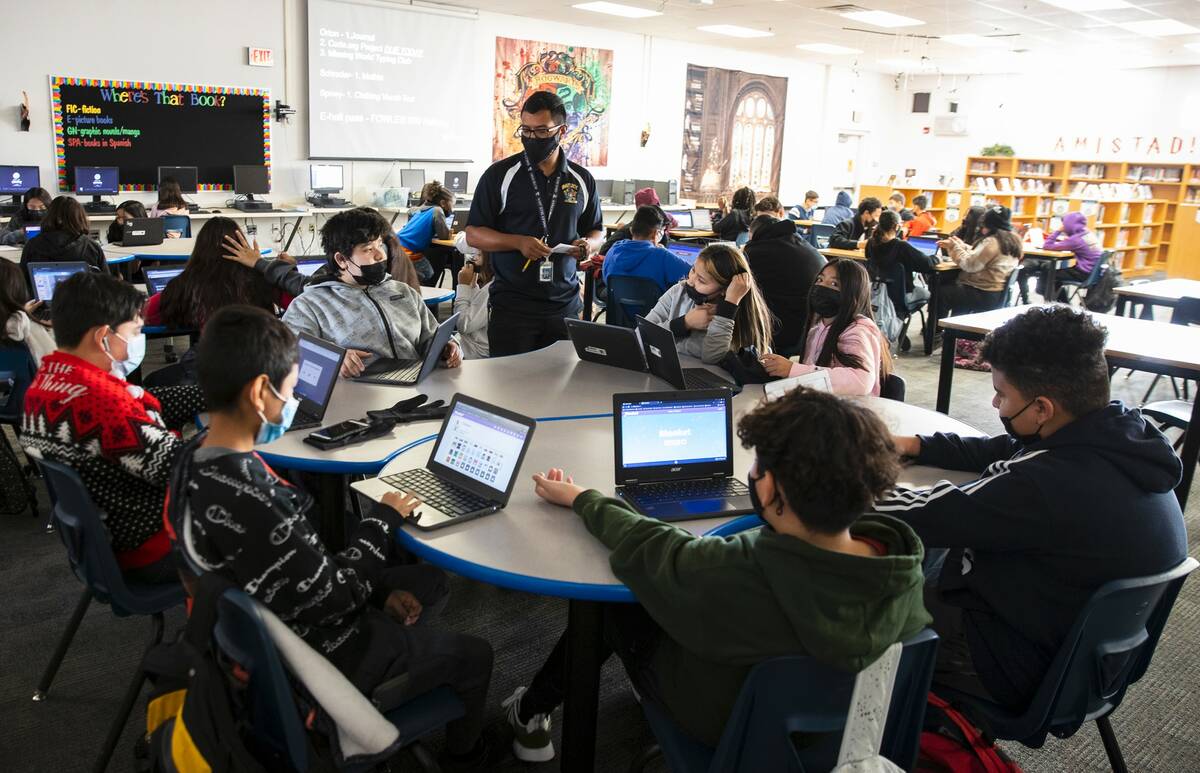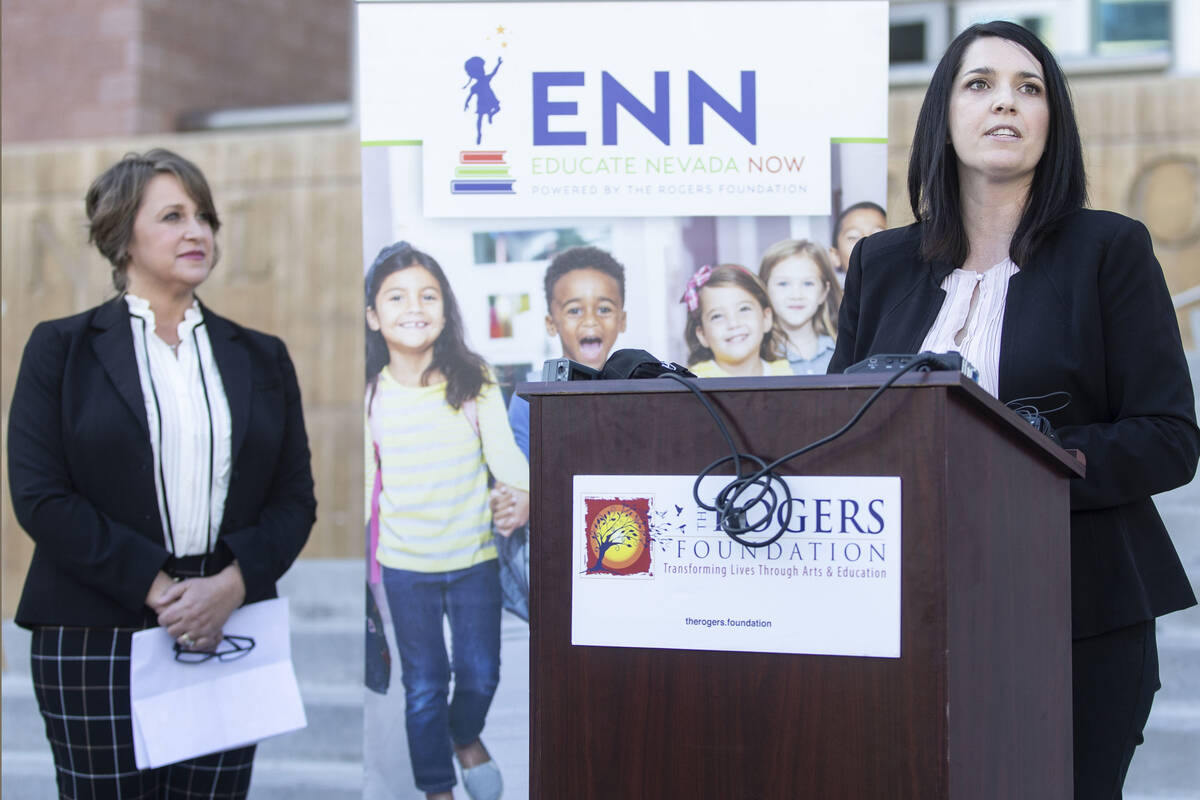Report says only Nevada received F’s in all areas of school funding
Nevada was the only state in the country to receive a failing grade in every area of school funding, according to a national report that analyzes school funding fairness.
“Making the Grade” is an annual report from the Education Law Center that looks at how fair school funding is across the United States. In its report issued Tuesday, the organization analyzed the level of funding needed to provide adequate levels of qualified teachers, support staff, programs and services for students in each state, as well as an adequate level of funding for low-income districts with greater challenges in educating students.
The report used national data sets from the U.S. Census Bureau and the U.S. Bureau of Economic Analysis to analyze fairness through three measures: funding level, funding distribution and funding effort.
Nevada ranked 47th in the country for per-pupil funding and funds its students at $4,370 less per student than the national average, according to numbers from the 2019-2020 school year.
It was the only state in the country to receive an F in all three categories, according to the report. Wyoming, which funds students at $4,108 more per student than the national average, was the only state to receive A’s in each category, while New York, which funds students at the highest level of $11,158 more per student, received two A’s, with a C in funding distribution.
Educate Nevada Now, a nonpartisan education policy organization that works for school finance reform and which was founded in part by the Education Law Center, said in a news release Wednesday that the level at which Nevada funds education had translated into the largest class sizes in the country, limited resources and a lack of opportunities for students.
Amanda Morgan, executive director of Educate Nevada Now, called the latest “Making the Grade” report disheartening and an example of how indifferent and uncommitted the state is toward education.
“We don’t value (students) despite having the financial capacity to do more,” she said in a written statement included in the news release. “We can and we must do more.”
‘Stating the obvious’
Leaders of the Clark County School District, the fifth-largest school district in the country, also have been among the recent chorus of voices criticizing the level at which public schools are funded in the state, with Superintendent Jesus Jara repeatedly expressing concern about the state’s lack of investment in K-12 education.
In 2017, the Education Law Center found that Nevada was last in the nation when it came to providing additional funding for public school children most in need, just two years after the Legislature approved the state’s largest-ever tax hike, which was meant to generate more than $1 billion for public education.
John Vellardita, executive director of the Clark County Education Association, said Wednesday that “Making the Grade” was simply a report card that was “stating the obvious” about school funding in Nevada. The most important report from the union’s perspective was instead the recommendations that were issued by the Commission on School Funding earlier this year.
“That’s a road map for if there’s leadership willing to act,” Vellardita said.
‘Funding must be optimal’
Jara echoed those sentiments in a statement issued Thursday through the Nevada Association of School Superintendents, saying the commission had identified woefully inadequate funding levels.
“As Nevada’s leaders and families expect better academic outcomes for their children, funding must be optimal and in line with expectations,” Jara wrote.
Democratic lawmakers have recently called for an audit of the Clark County School District’s finances ahead of the next legislative session, citing concerns from constituents about how the district’s operations were being handled.
Polling from the conservative Nevada Policy Research Institute found that a majority of Nevadans support allowing parents to use their tax dollars to send students to public school alternatives, with 54 percent of those questioned supporting school choice.
Ahead of the start of the next legislative session, a proposal to break up the Clark County School District also could be on the table, after the effort was endorsed by several area chambers of commerce and organizers recently turned in enough signatures from voters to qualify for the 2024 ballot.
But Jara said in his statement that breaking up districts and continuing to underpay educators were not strategies for success and that Nevada’s children would bear the brunt of inadequate funding.
“Luckily, we are about to enter a new legislative session in Nevada, and we are going in with a potential budget surplus,” Morgan said in her statement. “We urge legislators to prioritize our students’ needs.”
Contact Lorraine Longhi at 702-387-5298 or llonghi@reviewjournal.com. Follow her at @lolonghi on Twitter.























